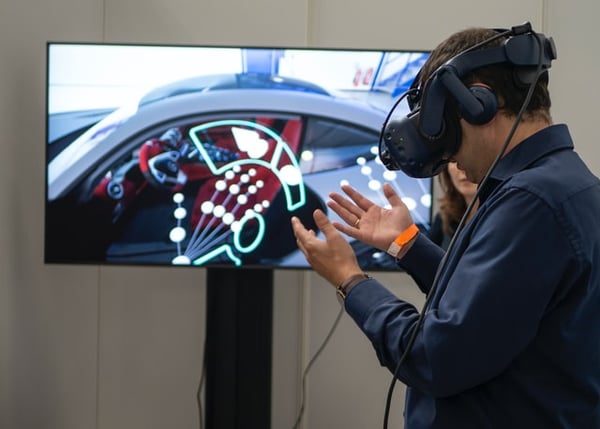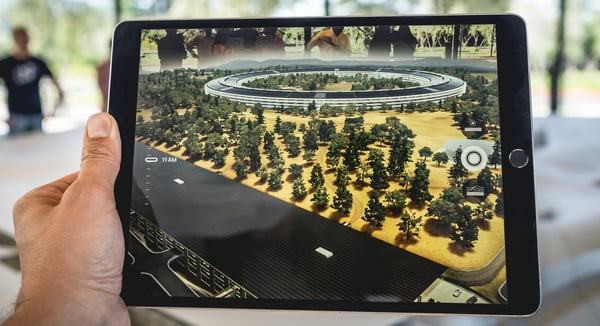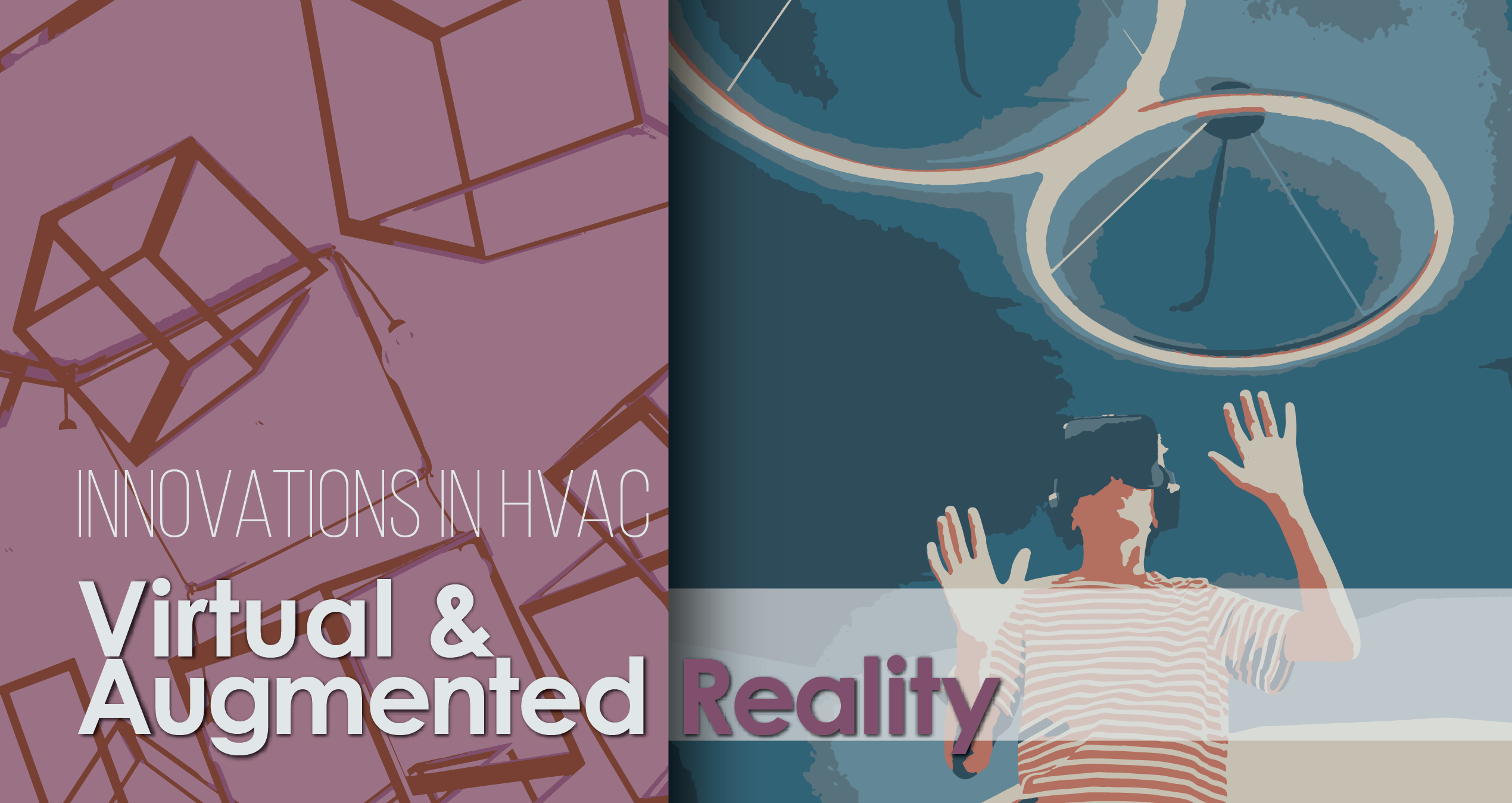Virtual and augmented reality can serve important roles in the HVAC industry, from training at home to supporting technicians in the field. Learn how these technologies can work for HVAC.
Virtual reality is often associated with leisure time. People use VR headsets to play immersive video games or chat with people in digital spaces. The same is true of augmented reality: many people think of the popular mobile game Pokémon Go, where players search for collectible monsters in the real world. VR and AR headsets are marketed and sold as gaming devices, but they can serve a significant role in HVAC. With the right apps, these headsets can train technicians with real world scenarios or provide valuable information while working on site. Virtual and augmented reality are made for HVAC.
Virtual training requires less space than a traditional training facility. In many instances, students can perform the training programs in a traditional classroom or in their own homes. They only need the space required for their VR setup. With virtual reality, students can learn and train their skills in a safe, virtual environment. In its current state, virtual reality won’t fully replace the experience of training with real world tools, but it could soon mirror the experience. As VR technology improves, programmers and designers can better simulate real world scenarios. Virtual reality can account for more factors as technology improves. VR training may one day match real world training.
 Virtual reality will become a vital tool for design, but it can also serve as an effective training tool.
Virtual reality will become a vital tool for design, but it can also serve as an effective training tool.
With VR, instructors can establish training programs inside a 3D virtual space. They can replicate tools that technicians would use in the real world, so students know what they are using in the field. Students will use their VR headsets to navigate the training program. They can use their controllers to utilize the virtual tools and perform maintenance on simulated HVAC machines. This reduces the costs needed to train a technician. It also opens the door to new training programs. Instructors can recreate common maintenance scenarios or create a challenging situation to test their students. Students must use the same skills to diagnose issues with the system and perform the necessary maintenance on the virtual unit.
Virtual training requires less space than a traditional training facility. In many instances, students can perform the training programs in a traditional classroom or in their own homes. They only need the space required for their VR setup. With virtual reality, students can learn and train their skills in a safe, virtual environment. In its current state, virtual reality won’t fully replace the experience of training with real world tools, but it could soon mirror the experience. As VR technology improves, programmers and designers can better simulate real world scenarios. Virtual reality can account for more factors as technology improves. VR training may one day match real world training.
Augmented reality, or AR, adds a virtual layer to the real world. Unlike VR headsets, an AR headset will have transparent lens. Augmented reality programs project 3D models and other data onto the lens, and arrange it in your vision, so that everything in the program becomes part of the world around you. From there, users can explore the 3D models as if they are in the real world. Designers and architects can recreate a project in AR programs and present it as if the project were fully realized.
With augmented reality, users can explore a project in full 3D from anywhere in the world. With an AR headset, viewers will see the designs as if they are already built before any work begins. AR headsets can be an effective tool for presenting new projects, but it can also serve professionals in the field. AR programs can display valuable information as a user navigates a space. A user could input the manufacturer and model number of the unit to view the specifics of that model.
 Augmented reality projects data and models into 3D space, so that it appears to exist in the real world.
Augmented reality projects data and models into 3D space, so that it appears to exist in the real world.
New hires can watch instructional videos on performing maintenance while in the field. They can follow along without having to constantly pause and look at their phone. Instructional videos could help new hires brush up on the basics or aid them in performing maintenance that would require more experience. Industry veterans could examine individual components highlighted by the AR headset and pull up the relevant info to diagnose an issue. Augmented reality can give a technician the tools to perform their task.
With AR programs, HVAC installers can see HVAC ducts mapped out in real time. Imagine installers who can see the ductwork in place, complete with control dampers, as they perform the task. The program would display 3D BIM models where the ducts would be, so the installation can closely match the plans.
AR tools could make it easier to plan out and execute installations of complex duct systems, cutting down on expensive reworks when things don’t line up. Augmented reality will become a vital tool for established professionals and newcomers alike, by providing crucial information on site. It seems like science fiction, but many AR programs can already do many of these tasks.
As technology evolves, our industry finds new ways to apply it to HVAC. Virtual and augmented reality could soon serve a vital role in designing, installing, and maintaining HVAC systems.
What do you think of virtual reality? Have you used a VR headset before? Do you use virtual or augmented reality in your line of work? Share your thoughts in the Comments section. We want to hear from you!
MCDLG is Here to Help!
MCDLG is here to help! We can help you meet your HVAC requirements, from start to finish.
New to the HVAC industry? Or do you need to brush up on louvers and dampers? Browse the MCDLG Newsstand for explanations on industry terms and stats. Learn the basics of louvers and dampers, and how to choose the right equipment for your next project.
MCDLG also offers continuing education courses through our Campus Portal on AEC Daily! Learn at your own pace through our online courses or schedule a webinar for any course and take a more traditional approach. Learn important HVAC principles and earn continuing education credits from a variety of institutions, including ASHRAE and AIA.
Do you have a question regarding a current or future project? MCDLG can help! Visit our contact page and leave us a message. We will gladly help you find what you need, whether it's information or custom-built louvers and dampers. Let us put our 50+ years in the industry to work for you.
We are the Mestek Commercial Damper and Louver Group, a collective of top-tier HVAC brands. You don’t have to go it alone. MCDLG is here to help!
.webp?width=91&height=70&name=MCDLG%20Logo%20(Resize).webp)







